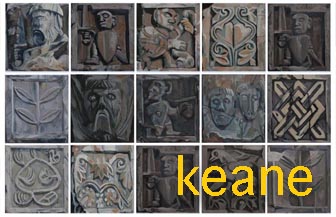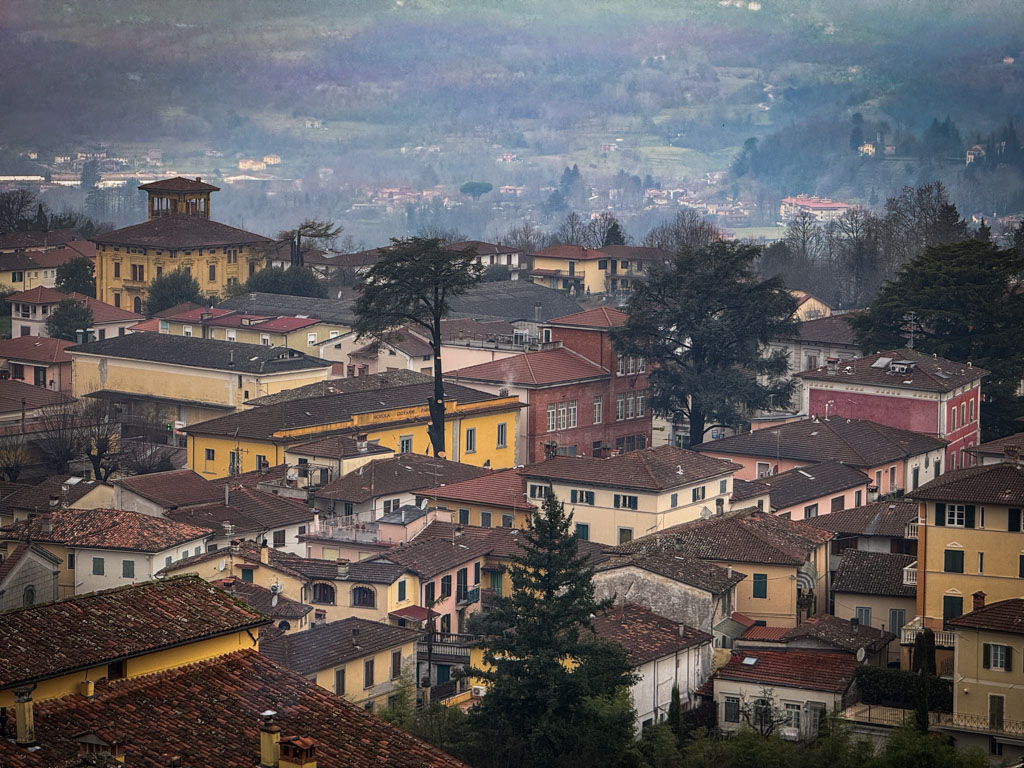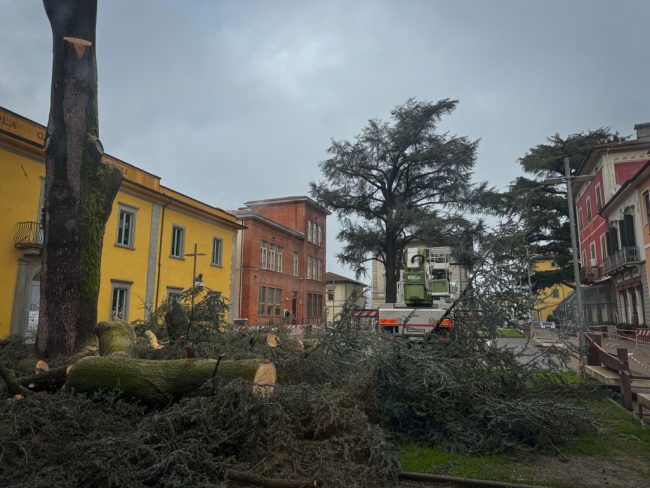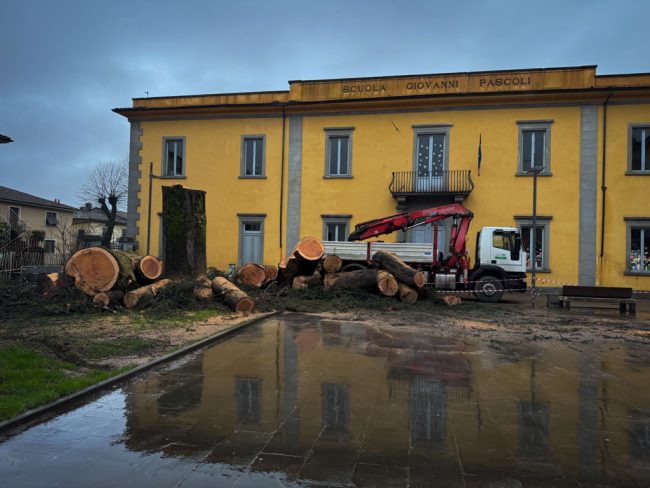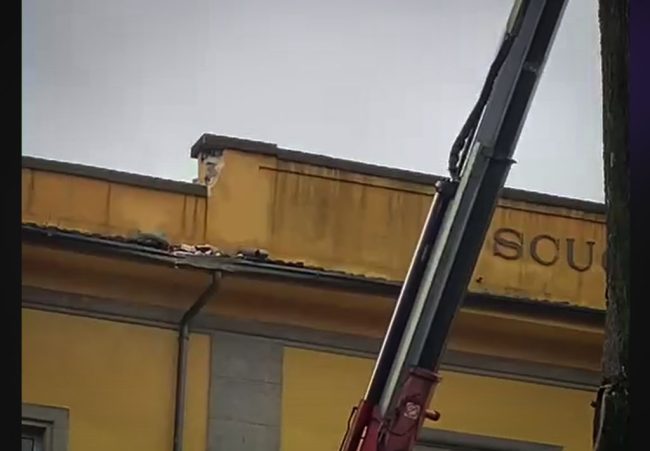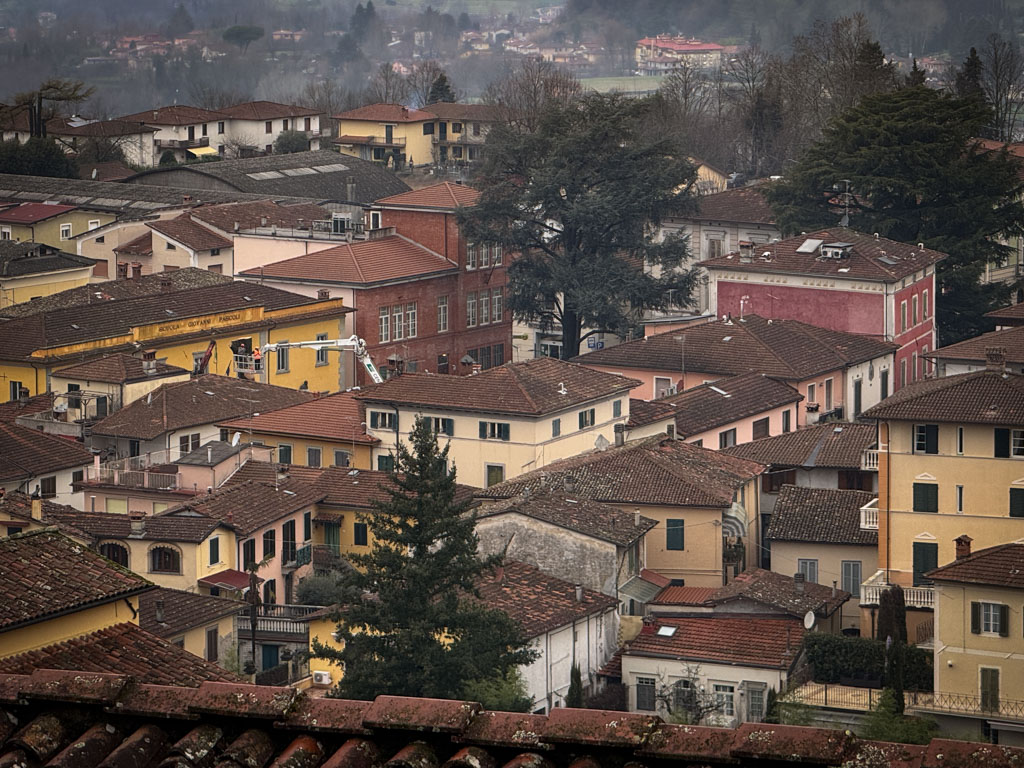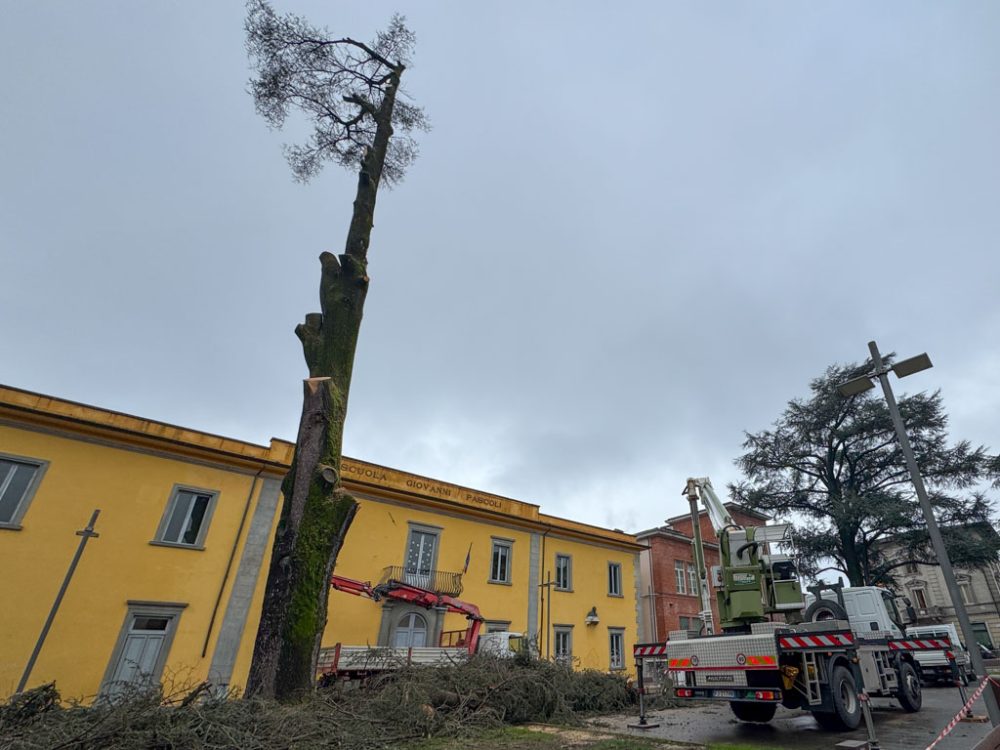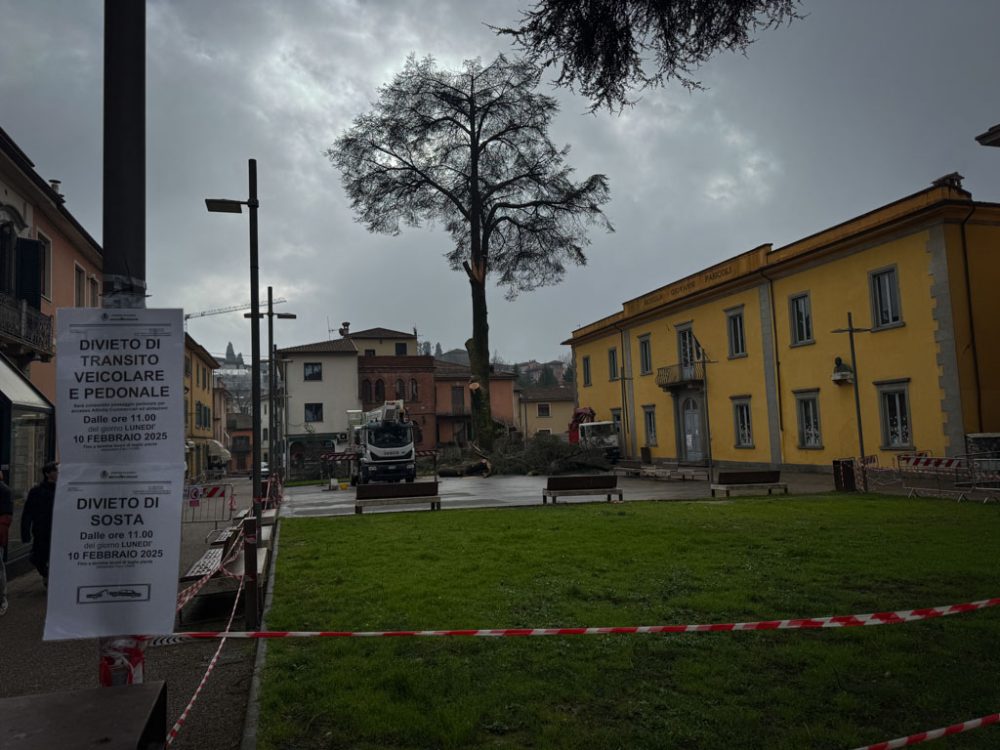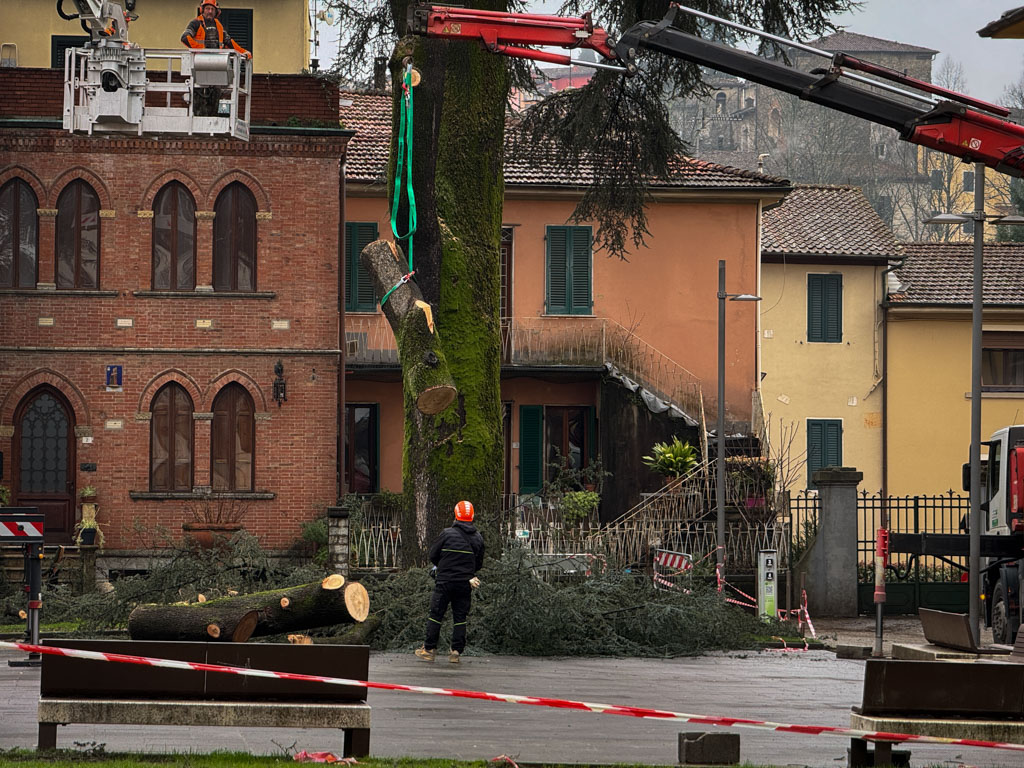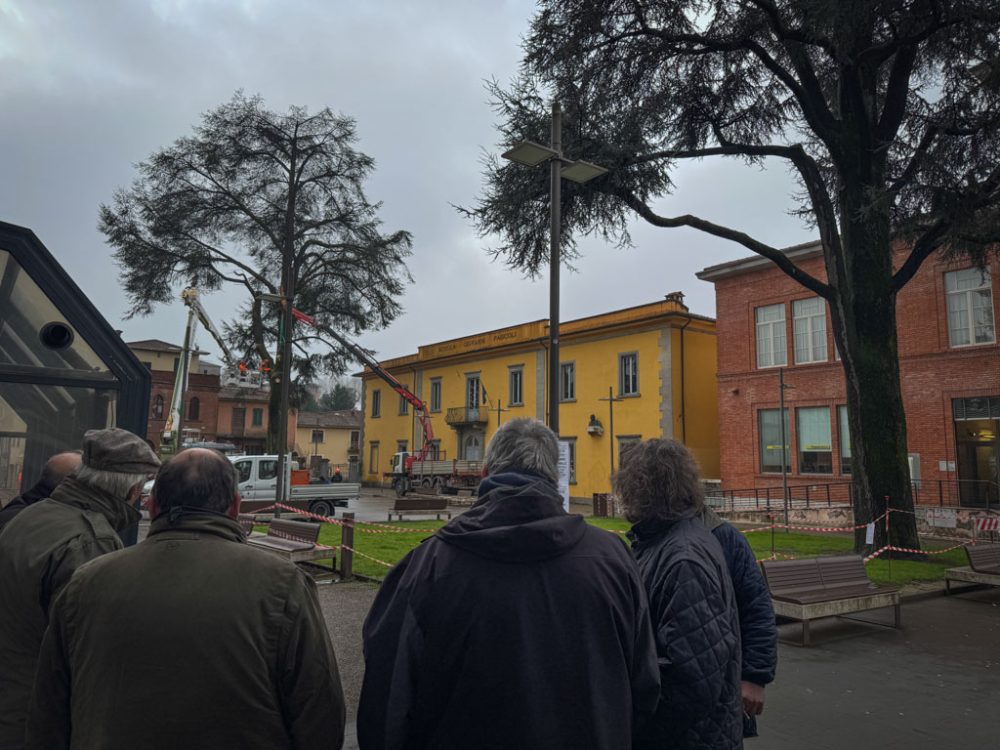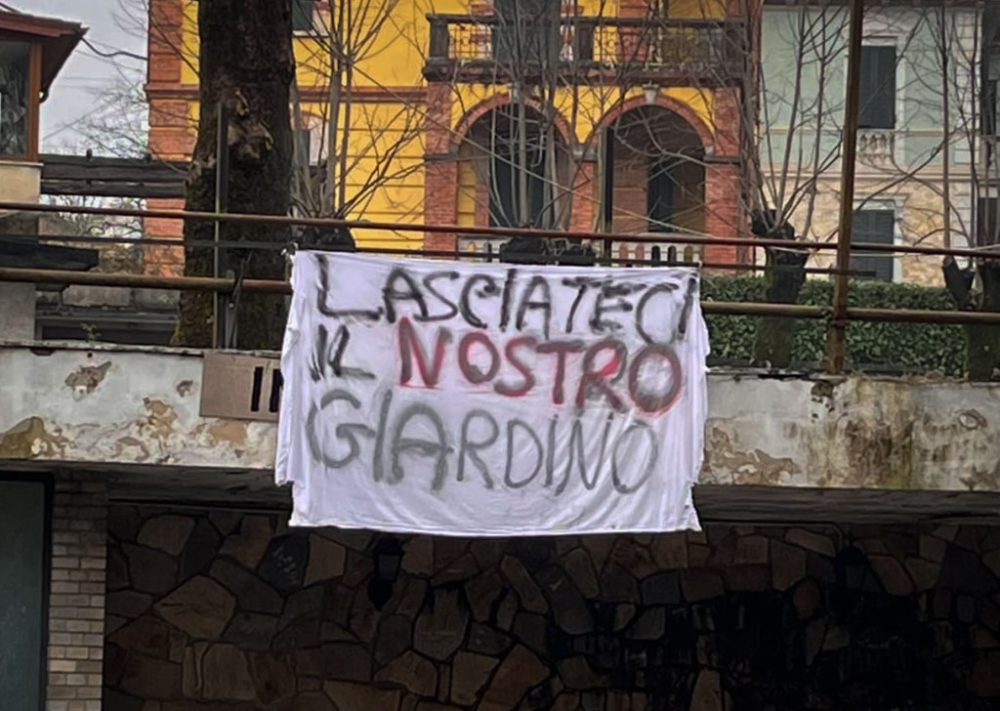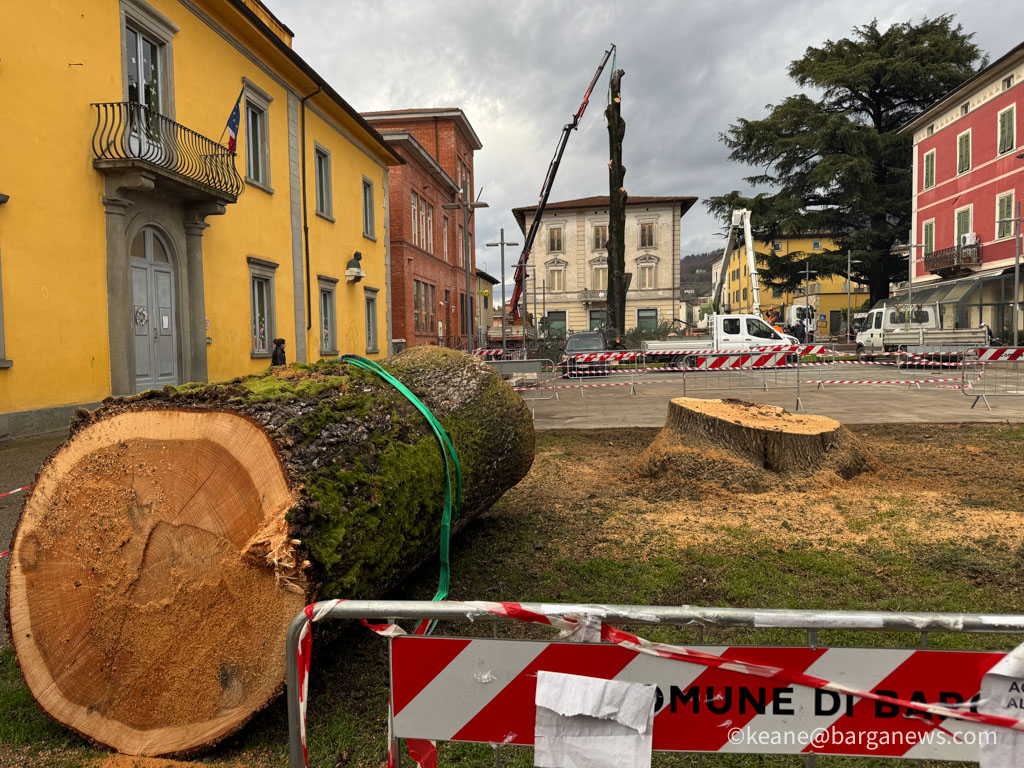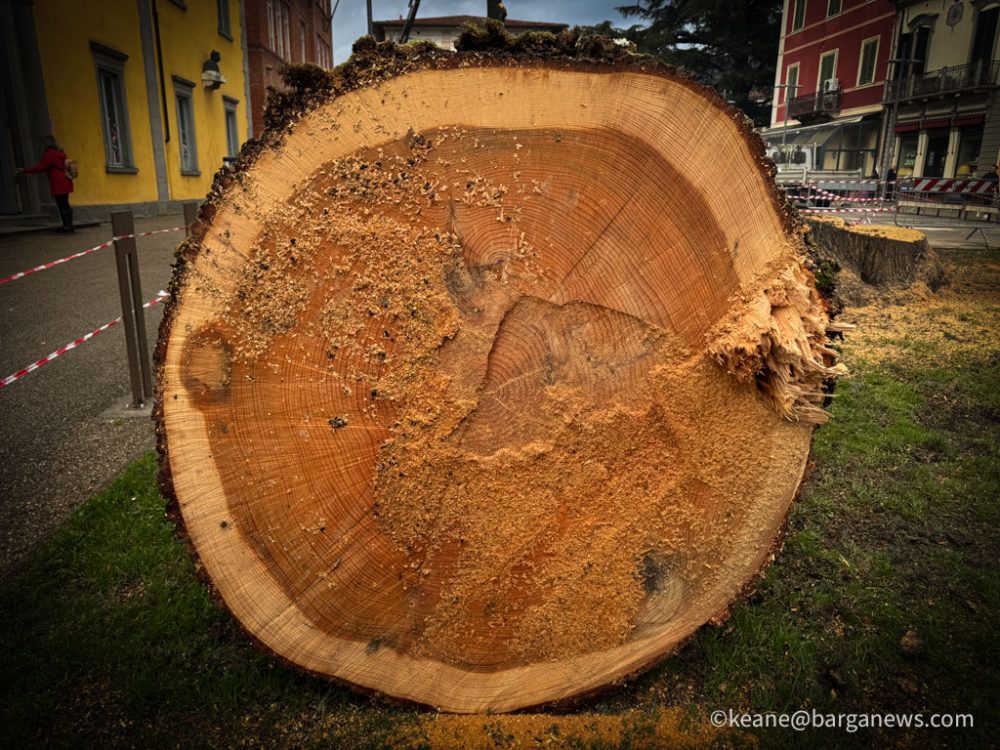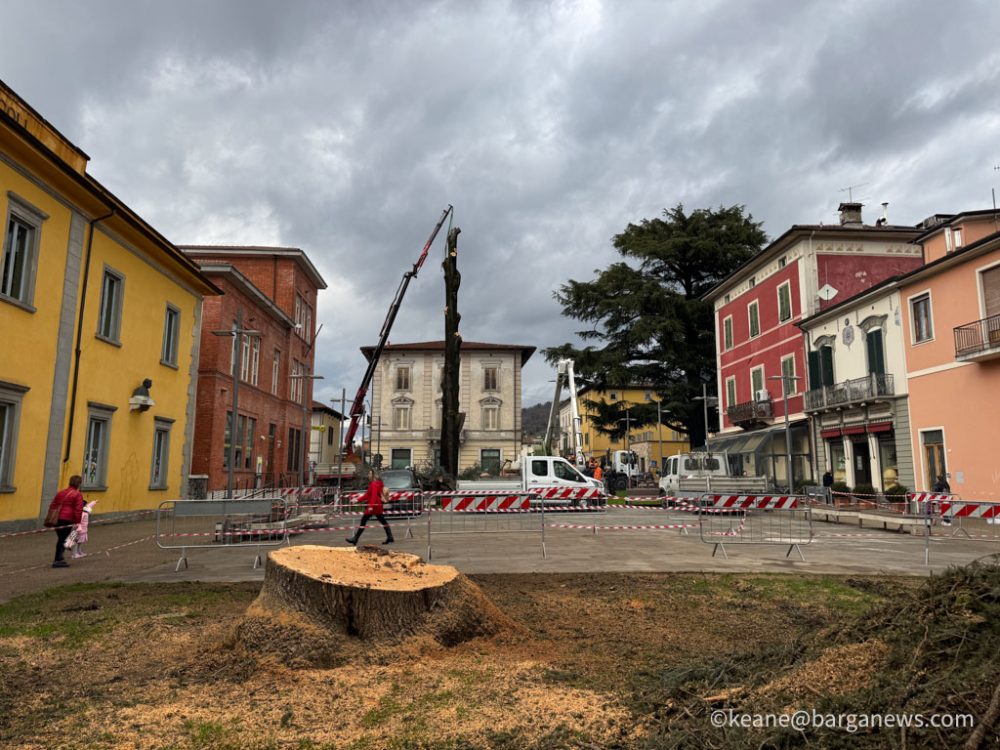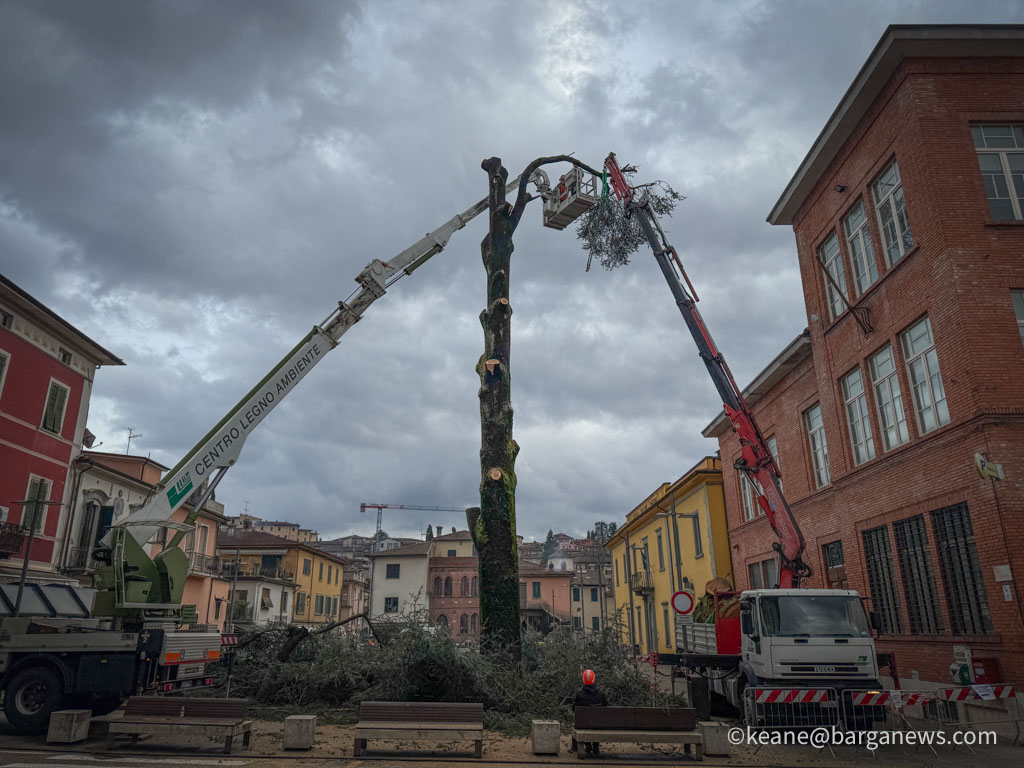For over a century, towering cedars had stood sentinel over Barga’s piazza, their vast canopies casting shade on generations of residents and visitors. Planted at the beginning of the last century, they had long been a defining feature of the square, their deep roots intertwining with the history of a city that prides itself on tradition (article with images here) But this week, the landscape changed forever. The trees, deemed diseased and dangerous, were brought down by the chainsaws of Centro Legno Ambiente, a decision that has sparked intense debate, emotional outcry, and a broader discussion on responsibility, safety, and the preservation of Barga’s natural heritage.
The Precipitating Event
The call for action did not come lightly. Last November, a fierce night wind tore a large branch from one of the cedars, sending it crashing to the ground. It was, in some ways, a warning. Though no one was hurt, the damage was significant, enough to tilt the scales in favour of removal. The administration, led by Mayor Caterina Campani, faced a difficult choice: preserve the historic trees despite concerns over their condition, or act preemptively to prevent a potential disaster. In the end, they chose the latter, citing expert evaluations that classified the cedars as both diseased and structurally unsound.
A Community in Debate
Yet, those very words—“diseased and dangerous” have fuelled a week-long controversy, with many questioning just how sick the trees truly were and whether their removal was necessary. On social media, conflicting reports emerged, with experts and ordinary citizens offering wildly differing assessments. Some claimed the cedars could have been saved with targeted pruning and treatment. Others warned that waiting too long could have resulted in tragedy.
The debate reflects a larger issue: the balance between conservation and safety, between historical continuity and the duty of governance. The administration made its decision, but the public’s reaction suggests a lingering sense of loss and unresolved doubt.
The Weight of Responsibility
To understand the gravity of such decisions, one need only look to history. In 2009, following the devastating L’Aquila earthquake, an Italian judge sentenced seven scientists to six years in prison for failing to adequately warn the public about the impending disaster. The ruling sent shockwaves through the scientific and administrative communities. The message was clear: those in power must bear the weight of their choices, and in the face of uncertainty, erring on the side of caution can be as much about legal liability as it is about public safety.
Luciano Maiani, then president of Italy’s Major Risks Commission, called the verdict “the death of the services provided to the state by professors and professionals,” arguing that the ruling set a dangerous precedent—one that might discourage experts from offering guidance under the threat of prosecution. The Barga administration may not face such extreme consequences, but the parallels are undeniable: when disaster looms, even if only as a possibility, who is willing to bear the responsibility of inaction?
A Piazza in Transition
For now, the piazza remains changed, stripped of the familiar shade and character the cedars once provided. The administration has promised renewal: a revitalisation project that will involve local businesses, consultations with the Superintendence, and community engagement. In time, new trees will be planted, and the space will take on a different form. But change does not come without grief. This week, the air in Barga carries the scent of fresh-cut wood, a reminder of what was lost and the weight of decisions made.
As the dust settles, the question lingers: was it an act of necessary foresight, or an irreversible mistake?
L’abbattimento dei cedri: una città divisa
Per oltre un secolo, maestosi cedri hanno vegliato sulla piazza di Barga, le loro imponenti chiome offrendo ombra a generazioni di residenti e visitatori. Piantati all’inizio del secolo scorso, erano da tempo un elemento distintivo della piazza, con le loro radici profonde intrecciate alla storia di una città che fa della tradizione il suo orgoglio (articolo con immagini qui) Ma questa settimana, il paesaggio è cambiato per sempre. Gli alberi, ritenuti malati e pericolosi, sono stati abbattuti dalle motoseghe del Centro Legno Ambiente, una decisione che ha scatenato un acceso dibattito, una forte reazione emotiva e una più ampia discussione su responsabilità, sicurezza e conservazione del patrimonio naturale di Barga.
L’evento scatenante
La decisione non è stata presa alla leggera. Lo scorso novembre, un violento vento notturno spezzò un grande ramo di uno dei cedri, facendolo precipitare a terra. In un certo senso, fu un segnale di allarme. Nessuno rimase ferito, ma i danni furono significativi, abbastanza da far pendere l’ago della bilancia verso la rimozione. L’amministrazione, guidata dalla sindaca Caterina Campani, si trovò di fronte a una scelta difficile: preservare gli alberi storici nonostante le preoccupazioni sulla loro salute, oppure agire preventivamente per evitare un possibile disastro. Alla fine, scelse la seconda opzione, basandosi su valutazioni di esperti che classificavano i cedri come malati e strutturalmente compromessi.
Una comunità divisa
Eppure, proprio quelle parole—“malati e pericolosi” hanno alimentato una settimana di polemiche, con molti che si sono chiesti quanto fossero realmente compromessi e se il loro abbattimento fosse davvero necessario. Sui social media sono circolate valutazioni contrastanti, con esperti e cittadini comuni che offrivano opinioni discordanti. Alcuni sostenevano che i cedri avrebbero potuto essere salvati con potature mirate e trattamenti specifici. Altri avvertivano che aspettare troppo a lungo avrebbe potuto portare a una tragedia.
Il dibattito riflette un problema più ampio: l’equilibrio tra conservazione e sicurezza, tra continuità storica e dovere di governo. L’amministrazione ha preso la sua decisione, ma la reazione del pubblico suggerisce un senso di perdita e un dubbio ancora irrisolto.
Il peso della responsabilità
Per comprendere la gravità di certe scelte, basta guardare alla storia. Nel 2009, dopo il devastante terremoto dell’Aquila, un giudice italiano condannò sette scienziati a sei anni di carcere per non aver avvertito adeguatamente la popolazione del rischio imminente. La sentenza scosse profondamente la comunità scientifica e amministrativa. Il messaggio era chiaro: chi ha potere deve assumersi il peso delle proprie decisioni e, di fronte all’incertezza, la prudenza può essere dettata tanto dalla responsabilità legale quanto dalla sicurezza pubblica.
Luciano Maiani, allora presidente della Commissione Grandi Rischi, definì la sentenza “la morte dei servizi prestati allo Stato da professori e professionisti”, sostenendo che il verdetto stabilisse un pericoloso precedente, capace di scoraggiare gli esperti dal fornire pareri per timore di ritorsioni legali. L’amministrazione di Barga probabilmente non affronterà conseguenze così estreme, ma il parallelo è evidente: quando incombe un potenziale disastro, anche solo come possibilità, chi è disposto ad assumersi la responsabilità dell’inazione?
Una piazza in trasformazione
Per ora, la piazza appare diversa, privata dell’ombra e del carattere che i cedri le donavano. L’amministrazione ha promesso un rinnovamento: un progetto di riqualificazione che coinvolgerà attività locali, consultazioni con la Soprintendenza e il coinvolgimento della comunità. Con il tempo, nuovi alberi saranno piantati e lo spazio assumerà una nuova forma. Ma il cambiamento non arriva senza dolore. Questa settimana, l’aria di Barga porta con sé il profumo del legno appena tagliato, un promemoria di ciò che è stato perso e del peso delle decisioni prese.
Mentre la polvere si deposita, una domanda rimane: è stato un atto di lungimiranza necessaria o un errore irreversibile?

